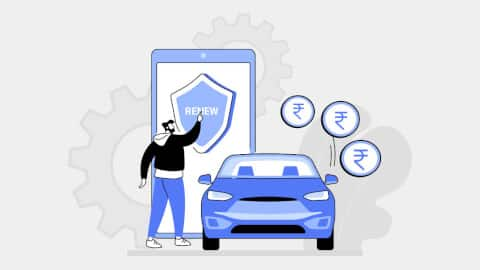1
Feeling Inadequately Insured? 3 Ways To Extend Your Health Insurance CoverWhat's New
Six Care Tips You Should Follow For Your New Car
Maintaining your car is the key to keeping it in top condition. If you have just got the keys of your dream car, its upkeep is very important so that even after years, it looks like a brand new vehicle. Taking care of your new car will ensure its longevity, boost safety, enhances reliability and performance, saves expensive repair costs, minimizes the chances of roadside emergencies, protects the environment, etc. Here are a few simple and easy tips to follow:
1. Read the manual: The owner’s manual provides key information about operating your vehicle. By going through the owner’s manual, you are taking an important step in being a well-informed driver. One of the most important sections in the manual is vehicle maintenance where you will learn about taking care of the engine, air filter, headlight bulbs, adjusting headlights. The manual also gives a maintenance schedule that includes parts to check on a daily basis and when to replace spark plugs, oil, filter, etc. It also provides information related to the vehicle’s warranty period and roadside assistance contact information.
((calculator))
2. Use the clutch properly: The clutch performs important functions in a car. It is needed to stop power transmission to the drive shaft so that you can change gears. It prevents the engine from stalling when you are in gear at slow speeds. New drivers who bought their first car might not know how to use the clutch properly. Don’t rest your foot on the clutch pedal unnecessarily until and unless you want to change the gear. Even though you think that there’s no pressure being applied, there is. This pushes the pressure pad against the clutch plate but doesn't engage completely, therefore creating more friction and wearing out the clutch faster. The best way to avoid this from happening is to keep your foot away from the clutch unless you are actually changing gear.
3. Follow service schedule regularly: While your car may seem like it is in a good condition but it is always in a state of degradation once it’s on the road which you may not be able to notice. A routine service schedule is important for your car to contribute to less pollution, run more efficiently, increase longevity, and maintain the resale value. Important fluids that lubricate the engine and allow for the safe and proper operation of systems such as power steering and power brakes burn away and become contaminated. Filters that prevent particulate matter from entering the engine will reach capacity over time. For these reasons, follow the service schedule regularly. The service schedule includes a variety of components like oil changes, air, and fuel filter replacements, spark plug replacement, power steering, brakes, etc.
4. Understand the dimensions of your car: It’s important to know the dimensions of your car so that you don’t hit your car when parking in a small area or driving in a narrow lane. There may be situations when you have to drive in environments such as higher terrain or there might be a lot of crags. You should know about the length, width, and height of your car. You should also know about the ground clearance of your car. Ground clearance is the measurement between the lowest part of a vehicle’s frame and the ground. More ground clearance will help a vehicle overcome objects on the road.
((relatedarticle_1))
5. Install floor mats: On a daily basis, you bring a lot of slush, soil, dust, and mud from your footwear into your car. All that muck is not good for your car. A pair of perfectly fit floor mats can improve the interiors of your car and reduce the wear and tear of your car’s carpet. Devote time to choose the right material, type of mat, and measure the area required for installing mats before you shop.
6. Clean your car regularly: It’s important to clean your car regularly. Dirt, pollen, bird droppings, leaves are some of the things that may prevent you from having a great drive. Moreover, during a pandemic, it may not be safe to touch the window or doors of your car without disinfecting them. Use a microfiber cloth for cleaning. It’s made of polyester and nylon. The small fibers of the cloth are able to attach themselves to the smallest dust particles. You can add some liquid disinfectant to the water. Clean the area under the wiper of your car as a lot of dust tends to settle there. Use disinfectant wipes for surfaces like the steering wheel, control buttons, door interiors, cup holders, etc.
((newsletter))














